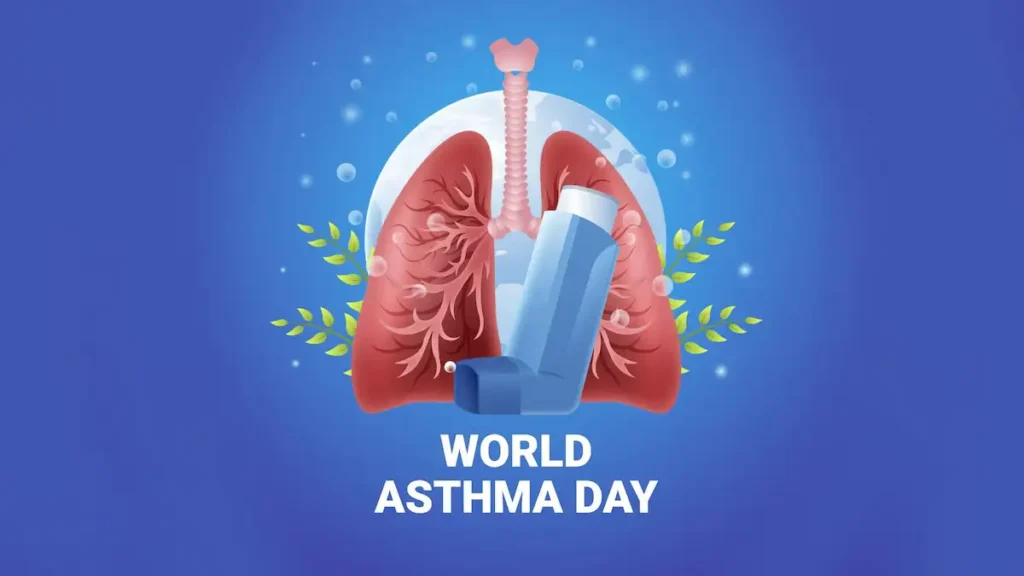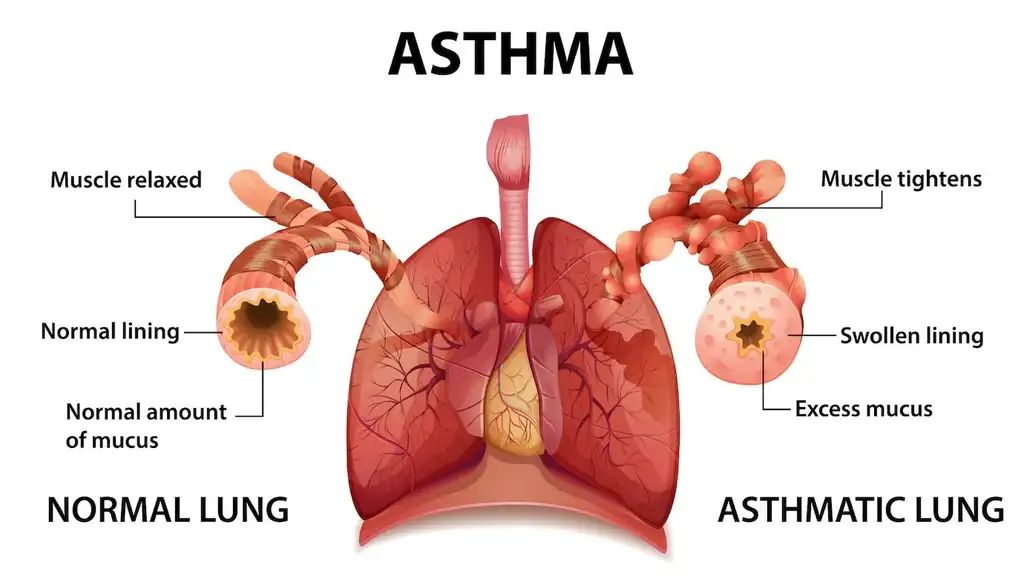World Asthma Day 2025: Recognizing Symptoms, Managing Triggers, and Staying Ahead of This Widespread Respiratory Condition

Observed on the first Tuesday of May each year, World Asthma Day aims to increase global understanding of asthma—a chronic respiratory illness that impacts the daily lives of millions. In 2025, this awareness day is marked on May 6, serving as a timely reminder to learn more about the causes, symptoms, and effective ways to manage this lifelong condition.
Asthma isn’t just an occasional inconvenience. For many individuals, it presents a continuous health challenge, influencing their ability to engage in everyday activities, perform well at work or school, and get restful sleep. The good news is that with the right approach, people with asthma can still lead active, fulfilling lives.
What is Asthma?
Asthma is a long-term inflammatory disease of the airways in the lungs. It causes the air passages to swell and narrow, often leading to breathing difficulties. When exposed to certain environmental or physical triggers, people with asthma may experience flare-ups or what’s commonly referred to as an asthma attack.

Although asthma often begins in childhood, it can also develop in adults. It is not contagious, but it does tend to run in families, suggesting a genetic component. While there is currently no cure, asthma can be managed with medical support and healthy habits.
Recognizing the Symptoms
Asthma symptoms vary widely in intensity and frequency. Some people may experience mild discomfort every now and then, while others deal with persistent issues that interfere with daily life.
Key symptoms include:
- Wheezing: A high-pitched whistling sound during breathing, particularly when exhaling.
- Coughing: A dry or persistent cough, especially worse at night or after exercise.
- Shortness of Breath: Feeling winded or gasping for air, even after light physical activity.
- Chest Tightness: A sensation of pressure or heaviness in the chest.
Symptoms can worsen at night, during cold weather, or when exposed to specific asthma triggers.
Common Asthma Triggers
Managing asthma effectively begins with identifying and avoiding personal triggers. These can differ from person to person but generally fall into several broad categories:
- Environmental Allergens: Pollen, mold, dust mites, pet dander, and insect droppings.
- Airborne Irritants: Tobacco smoke, air pollution, strong perfumes, and chemical vapors.
- Climate Factors: Sudden weather changes, cold temperatures, or high humidity levels.
- Physical Activity: Exercise-induced asthma is common, especially when done in cold or dry conditions.
- Infections: Respiratory illnesses like the flu, colds, or sinus infections can trigger flare-ups.
- Strong Emotions: Stress, laughter, or crying can tighten airways in sensitive individuals.
- Certain Medications: Drugs such as aspirin or beta-blockers can sometimes aggravate symptoms.
Understanding your personal triggers is a major step in preventing attacks and maintaining better control over asthma.
Managing Asthma: Practical Tips and Prevention
Even though asthma cannot be completely cured, there are many ways to reduce its impact and live well. With the right treatment plan and precautions, most people can prevent severe symptoms and lead a normal life.
1. Know and Avoid Your Triggers
One of the most important things is identifying what worsens your condition. Keeping a journal can help track your symptoms and pinpoint potential causes—whether it’s pollen in the spring or exposure to dust at home.
2. Stick to Your Treatment Plan
Working with a healthcare provider to create a personalized asthma action plan is essential. This plan should include:
- Controller medications for daily maintenance.
- Rescue inhalers for sudden symptoms or attacks.
- Steps to take when symptoms worsen.
Always follow your doctor’s advice and avoid skipping prescribed doses.
3. Monitor Lung Function
Using tools like a peak flow meter can help you measure how well your lungs are working. Changes in your peak flow readings can alert you to worsening asthma before symptoms become severe.
4. Exercise Smartly
Regular physical activity can be beneficial for lung health. If exercise tends to trigger symptoms, warm up beforehand and carry your inhaler. Speak to your doctor about ways to make physical activity safe and effective.
5. Get Vaccinated
Vaccines like the flu shot and COVID-19 boosters are crucial for those with asthma, as respiratory infections can significantly worsen the condition.
6. Prioritize Air Quality
Keep your home clean and ventilated. Use air purifiers if needed and avoid indoor smoking or the use of harsh cleaning chemicals. On high-pollution days, limit time outdoors.
7. Lead a Healthy Lifestyle
Maintaining a balanced diet, managing stress, sleeping well, and staying hydrated all contribute to better asthma control and overall wellness.
When to Seek Urgent Care
While many asthma symptoms can be managed at home, some warning signs indicate the need for emergency care. These include:
- Severe shortness of breath or wheezing that doesn’t improve with a rescue inhaler.
- Trouble speaking in full sentences.
- Bluish lips or fingernails, indicating lack of oxygen.
- Extreme fatigue or confusion.
If you or someone you know experiences these symptoms, seek immediate medical assistance.
The Significance of World Asthma Day
World Asthma Day 2025 is not just an awareness campaign—it’s a call to action. It encourages people living with asthma, their families, healthcare providers, and policymakers to work together toward better understanding and control of the condition.
This year, let’s use the opportunity to promote cleaner air, invest in public health education, and support accessible healthcare solutions. Whether you’re living with asthma or supporting someone who is, knowledge and early action are key.






